2005
Type of resources
Topics
Keywords
Contact for the resource
Provided by
Years
Formats
Representation types
Update frequencies
Scale
Resolution
-
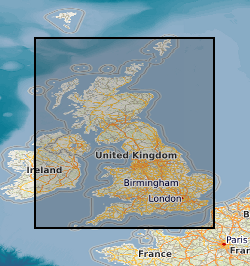
Data identifying landscape areas (shown as polygons) attributed with geological names and rock type descriptions. The scale of the data is 1:250 000 scale providing a generalised geology. Onshore coverage is provided for all of England, Wales, Scotland and the Isle of Man. Bedrock geology describes the main mass of solid rocks forming the earth's crust. Bedrock is present everywhere, whether exposed at surface in outcrops or concealed beneath superficial deposits or water bodies. The bedrock geology of Great Britain is very diverse and includes three broad classes based on their mode of origin: igneous, metamorphic and sedimentary. The data includes attribution to identify each rock type (in varying levels of detail) as described in the BGS Rock Classification Scheme (volumes 1-3 ). The bedrock has formed over long periods of geological time, from the Archean eon some 7500 million years ago, to the relatively young Pliocene, 58 million years ago. The age of the rocks is identified in the data through their BGS lexicon name (published for each deposit at the time of the original survey or subsequent digital data creation). For stratified rocks i.e. arranged in sequence, this will usually be of a lithostratigraphic type. Other rock types for example intrusive igneous bodies will be of a lithodemic type. More information on the formal naming of UK rocks is available in the BGS Lexicon of Named Rock Units. Geological names are based on the lithostratigraphic or lithodemic hierarchy. The lithostratigraphic scheme arranges rock bodies into units based on rock-type and geological time of formation. Where rock-types do not fit into the lithostratigraphic scheme, for example intrusive, deformed rocks subjected to heat and pressure resulting in new or changed rock types; then their classification is based on their rock-type or lithological composition, using visible features such as texture, structure, mineralogy. The data are available in vector format (containing the geometry of each feature linked to a database record describing their attributes) as ESRI shapefiles and are available under BGS data licence.
-
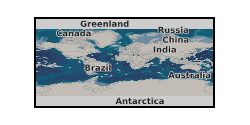
SCCS is the largest Carbon Capture and Storage (CCS) research group in the UK. Our internationally renowned researchers provide connected strength across the full CCS chain. With our unique position SCCS is able to act as the conduit between academia, industry and government. We are able to provide a single point of coordination for all aspects of CCS research ranging from capture engineering and geoscience, to social perceptions and environmental impact, through to law and petroleum economics. SCCS has access to cutting-edge experimental and analytical facilities, expertise in field studies, modelling and simulation, key academic and research personnel to accelerate the development of CO2 transportation, capture and subsurface storage. We undertake strategic fundamental research and are also available for consultancy. In addition, we perform a key role in providing impartial advice to industry, the public sector, government agencies, and policy makers. Founded in 2005, SCCS is a partnership of the British Geological Survey, Heriot-Watt University, the University of Aberdeen, the University of Edinburgh and the University of Strathclyde working together with universities across Scotland. SCCS is funded by the Scottish Funding Council (SFC).
-
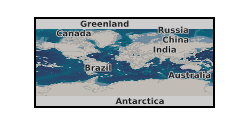
SCCS presentations, consultations, responses, briefings and communications on CCS and CO2 storage for the period 2005 - 2009
-
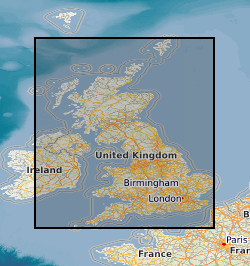
Data identifying linear features (shown as polylines) representing geological faults at the ground or bedrock surface (beneath superficial deposits). The scale of the data is 1:250 000 scale providing a generalised set of linear features. Onshore coverage is provided for all of England, Wales, Scotland, and the Isle of Man. Geological faults occur where a body of bedrock has been fractured and displaced by large scale processes affecting the earth's crust (tectonic forces). The digital data are attributed by fault type; two categories of fault are described in the data: contact and non-contact faults. Contact faults form a boundary between two different rock types whilst non-contact faults indicate a fault displacement within the same rock. The data has been generalised and shows only the location of major faults. All faults shown are inferred i.e. not exposed or seen at a locality, but derived from other evidence including linear depressions in the landscape, the truncation or displacement of topographical features. The data are available in vector format (containing the geometry of each feature linked to a database record describing their attributes) as ESRI shapefiles and are available under BGS data licence.
-
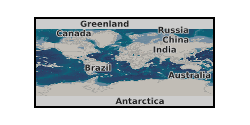
In January 1993, as part of the Joule II Non-nuclear Energy Research Programme, the European Commission initiated a two year study of the potential for the disposal of industrial quantifies of carbon dioxide underground, with a view to reducing emissions to the atmosphere. The participants in the study were the British Geological Survey (UK), TNO Institute of Applied Geoscience (The Netherlands), BRGM (France), CRE Group Ltd (UK), IKU Petroleum Research (Norway), RWE AG (Germany), University of Sunderland Renewable Energy Centre (UK) and Statoil (Norway). The objective of the study was to examine whether carbon dioxide emissions from large point sources such as power stations, could be disposed of safely, economically and with no adverse effects on man and the environment. Project No. CT92-0031.
-
Anthropogenic influence on Upper Tropospher-Lower Stratosphere (UTLS) clouds and aerosol (CIRRUS) UTLS round 5 project led by Prof. Tom Choularton. The dataset contains the total number of Condensation Nuclei (CN), CCN, IN and the size distribution of optically active particles in clean and polluted air in the UTLS region over the UK, the number, size distribution, phase and morphology of droplets and crystals in cirrus cloud. Objectives -To measure the total number of Condensation Nuclei (CN), CCN, IN and the size distribution of optically active particles in clean and polluted air in the UTLS region over the UK. Assessment of their spatial distribution and their likely source based on tracer measurements and air mass history. -To use a unique suite of state of the art instruments to quantify the extent to which air mass history, and gas and particle loading can affect the microphysical properties of cirrus clouds in the UTLS region, in particular, the size distribution, phase and morphology of cloud particles. -To obtain estimates of HNO3 loss to cirrus clouds and the subsequent effect on the aerosol population after the cloud has evaporated using case studies involving one or more wave clouds. -To make observations of the number, size distribution, phase and morphology of droplets and crystals in cirrus cloud and the number and size distribution of interstitial particles and correlate these with measurements of tracers that identify anthropogenic anthropogenic influence. Hence building on objective 3 to investigate the influence of cirrus on the distribution of aerosol and gases in the UTLS region as cloud and precipitation evaporate. -To make an assessment of the chemical composition of the particulate in the UTLS region as a function of their size, their spatial variability and the effect different sources have on their composition. -To use measurements of the masses of key components as a function of size of cirrus particle dry residues and interstitial particles to determine if there are distinct chemical differences between activated and unactivated particles. -To establish the partitioning of oxidised nitrogen between the gas and aerosol phases as a function of air mass history and source region. Methodology These studies were performed during the spring/summer of 2005 over the UK using the BAE 146 aircraft for in situ sampling Experiments were undertaken in a wide range of meteorological conditions i.e. in frontal cirrus, in convective conditions and in anticyclonic conditions. The aircraft made measurements below and within the cirrus cloud.
-
The AUTEX / WINTEX (Autumn and Winter Experiments) project was a Met Office campaign on board the Facility for Airborne Atmospheric Measurements (FAAM) aircraft, that collected cloud physics and radiation data over the UK, from October 2004 to February 2007. The dataset collection contains measurements of water vapour distribution in both the horizontal and the vertical, mixed phase cloud structure and ice initiation in cumulus clouds. They also included studies into sea surface reflectance at low solar zenith angles, cirrus cloud radiative properties, microwave signature of 'bright band', clear air spectroscopy at night, clear air spectroscopy in the infrared and far infrared, land surface emissivity studies and the effect of inhomogeneity in clouds at low solar zenith angles. FAAM Bae-146 non-core data is now public, but raw Bae-146 core data is restricted to the FAAM staff.
-
Facility for Airborne Atmospheric Measurements (FAAM) Aircraft Data for the Flux Experiment (FLUXEX)
The FLUXEX (Flux Experiment) project was an experiment to establish the fluxes of many ozone depleting gases (CFCs, HCFCs, halons) and greenhouse gases (HFCs, PFCs, SF6) from the UK. Its aim was to assess regional emission inventories of these gases to feed the UNEP/WMO Ozone Assessment and the UNFCCC. Attempts were also made to measure for the first time "new" ozone depleting gases, such as n-propyl bromide and hexachlorobutadiene, and to estimate UK emissions. To achieve this purpose, the FAAM aircraft, fitted with air sampling bottles, was flown in the boundary layer upwind and downwind of the UK. A total of 9 flights took place between 30. March and 29. September 2005.
-
The HadAT data are global radiosonde gridded temperature anomalies at standard levels (850, 700, 500, 300, 200, 150, 100, 50, and 30hPa) in the troposphere and in the lower stratosphere from 1958 to December 2012. This monthly timeseries are available on a 10 degree longitude by 5 degree latitude basis. This dataset supersedes the HadRT dataset. All values are anomalies relative to the monthly 1966-95 climatology. The gridded product is derived from 676 individual radiosonde stations with long-term records. Because of the criteria of data longevity the resulting dataset is limited to land areas and primarily Northern Hemisphere locations. Radiosondes are single launch instruments and there have been many changes in instruments and observing practices with time. HadAT has used a neighbour-based approach to attempt to adjust for these effects and produce a homogeneous product suitable for climate applications. Zonal averages were created by averaging all available gridbox values in each 5 degree latitude band. Large scale mean timeseries for the globe and the tropics (defined here as 20N to 20S) are simply cos(lat) weighted zonal mean field values. This reduces the spatial sampling bias towards Northern Hemisphere mid-latitudes. Other plausible large-scale averaging techniques would impact the timeseries values calculated. Cautionary note from the Met Office Hadley Centre It is important to note that significant uncertainty exists in radiosonde datasets reflecting the large number of choices available to researchers in their construction and the many heterogeneities in the data. To this end we strongly recommend that users consider, in addition to HadAT, the use of one or more of the following products to ensure their research results are robust. Currently, other radiosonde products of climate quality available from other centres for bona fide research purposes are: - Radiosonde Atmospheric Temperature Products for Assessing Climate (RATPAC) - RAdiosonde OBservation COrrection using REanalyses and Radiosonde Innovation Composite Homogenization ) - IUK (Iterative Universal Kriging) Radiosonde Analysis Project Also see a comparison with Microwave Sounding Unit (MSU) data by Remote Sensing Systems (see links under Docs tab below) .
-
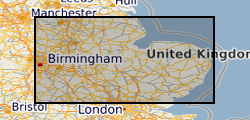
The data comprises four GIS layers representing the permeability of geological deposits for Great Britain (bedrock, superficial, artificial and mass movement deposits). The permeability data has been derived from DiGMap-GB (Digital Geological Map Data of Great Britain), and therefore reflects the scale of DiGMap-GB. For the majority of the Great Britain, the scale is 1:50,000, however in areas where the geology is not mapped to this scale, the next best available scale is used. For bedrock deposits this is 1:250,000 and for superficial deposits this is 1:625:000. Artificial ground and mass movement deposits have not been mapped beyond 1:50,000. The data is updated annually, or after a major new release of DiGMap-GB. The permeability data describes the fresh water flow through geological deposits and the ability of a lithostratigraphical unit to transmit water. Maximum and minimum permeability indices are given for each geological unit to indicate the range in permeability likely to be encountered and the predominant flow mechanism (fracture or intergranular). Neither of the assigned values takes into account the thickness of either the unsaturated or saturated part of the lithostratigraphical unit. The data can be used freely internally, but is licensed for commercial use. It is best displayed using a desktop GIS, and is available in vector format as ESRI shapefiles and MapInfo TAB files.
 NERC Data Catalogue Service
NERC Data Catalogue Service